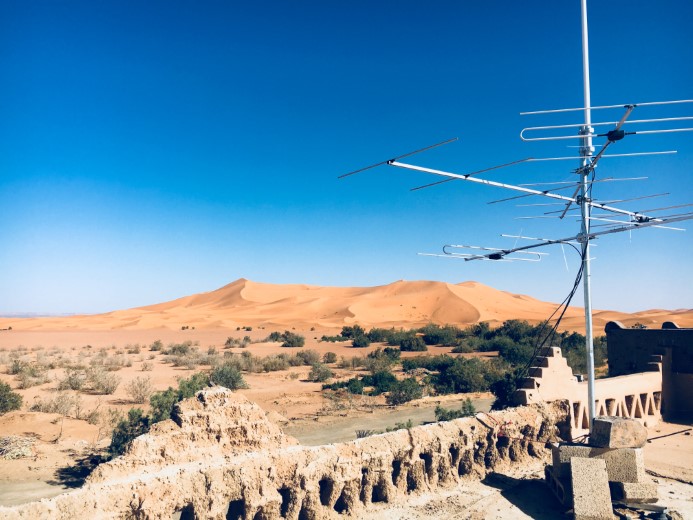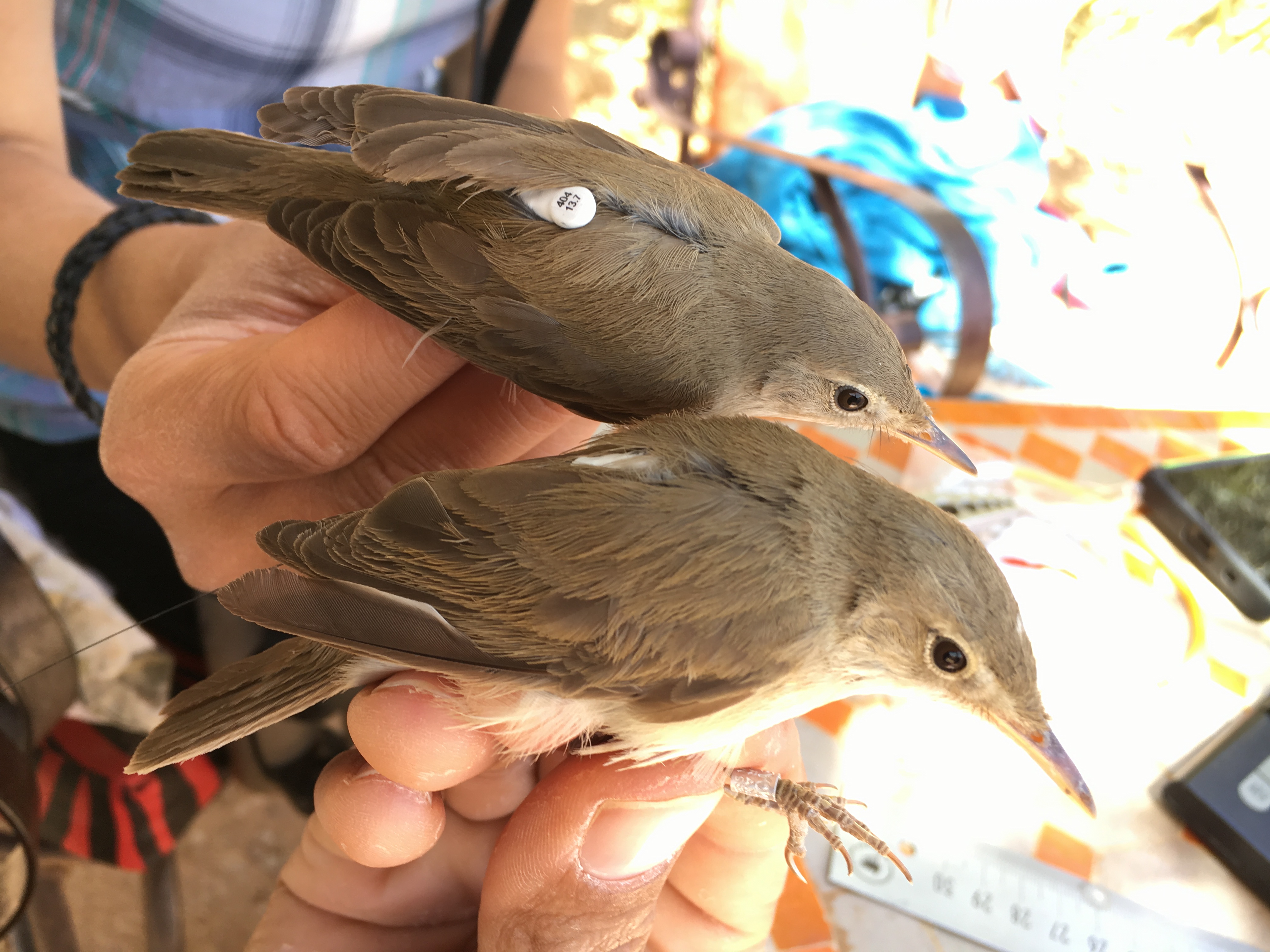Yasmina is a humble dry lake at the base of the impressive Erg Chebbi Dunes, on the northern fringe of the Sahara Desert in Morocco. It is in a relatively remote area in the heart of the Maghreb, attracting tourism for camel caravans and for wayfaring birders with a taste for sandstorms. An early spring inspection of the tamarisk trees bordering Yasmina’s shores will reveal a great assemblage of Phylloscopus and Sylvia warblers nervously hopping around the trees and understory. They are here making a migratory stopover- a stop of a few days to weeks to replenish energy reserves after having just crossed the formidable Sahara. Upon successfully refueling fat and muscle reserves at Yasmina, the birds then continue their journey to European breeding grounds.

A keen observer would notice a great deal of the Subalpine Warblers (Sylvia cantillans) are wearing colorful plastic rings on their legs. This species is particularly interesting to me because they obtain and aggressively defend small transient territories. Subalpine Warblers are often heard broadcasting their chattering songs signaling to their neighbors the boundaries of their territories. If these boundaries are intruded upon, a chase or physical altercation often ensues. But again, this is not their breeding site, so why are these birds spending valuable time and energy (both are limiting currencies for migration and subsequently for life history strategies) where there is no mate to defend in a location that is still far from their breeding areas? To begin elucidating this phenomenon I am examining the interactions between stopover behavior, refueling performance and hormonal programs. Every day I map each individual’s home range (by sighting their individualized color-ring combinations) and assess territoriality with playback experiments and hormone analysis.
However, now in the later part of spring, a new suite of species dominates the stopover site. The Reed, Isabelline, Saharan Olivaceous, and Melodious Warblers are some of the commoner tenants in our nets. These four members of the Acrocephalidae family, exhibit markedly diverse stopover strategies. For example, upon arrival, some spend the entire day hidden in the shade of a tree to conserve energy and immediately leave when night falls- while others actively forage in the heat and stay for weeks. In addition these species spend winters in different habitat types- therefore adaptations to desert conditions may vary. Here, along with Ivan Maggini, I am examining the relationship between stopover strategy, physiology and habitat adaptations. We are measuring physiological output with a respirometry device and collecting tissues for stable isotope analysis that provide us with information about each individual’s wintering habitat. These birds are then fitted with activity tags that send signals to an antenna and are stored on a hard drive. From the changes in tag signal strength we can infer movement patterns and calculate activity budgets. We hope to understand how activity levels in a dry and hot desert are influenced by physiology and non-migratory habitat adaptations.
Whether from hyper aggressive territoriality, or physiological adaptations, birds display a great diversity of strategies to make use of desert stopover sites every year on their incredible trans-continental journeys. A worthwhile phenomenon to study in further detail!

